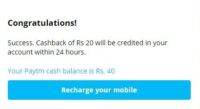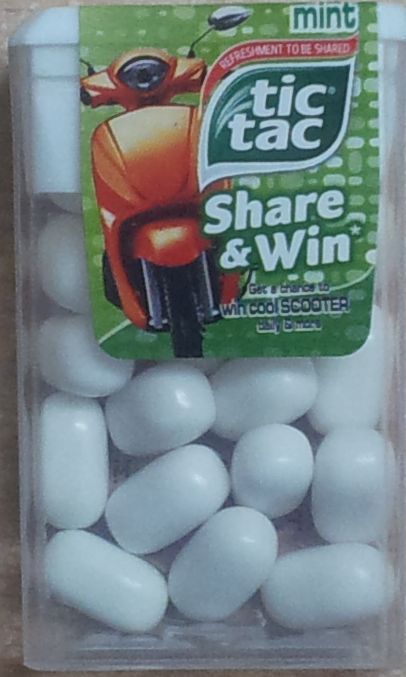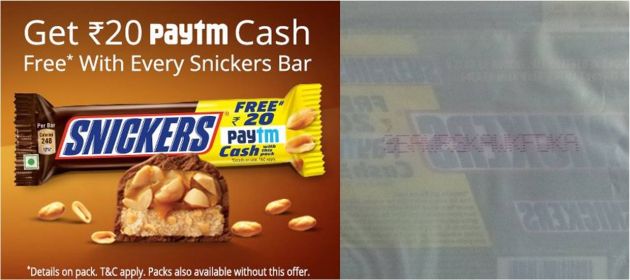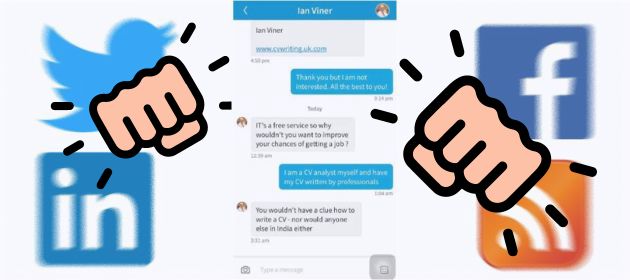In Omnichannel Couponing Drives CEM Success – Part 1, I’d highlighted the space challenge in the couponing phase of a CEM program. To recap, this comprises issues that range from where to insert the code and how to make the code large enough to be visible but small enough to fit on the existing package through to ensuring that there’s enough space on the label to print instructions on how to submit the code.
Subsequently, I’ve come across a few more CEM programs run by FMCG brands. The space challenge continues.
In addition, time has emerged as another challenge.
Read on for illustrations of the “space-time challenge” and our guidance for overcoming it (Spoiler Alert: Quantum mechanics knowledge not required!).
#1. SNICKERS PAYTM CASHBACK
Consumer gets INR 20 cashback credited to their account by purchasing a Snickers chocolate bar costing INR 35 and paying for it with their PayTM mobile wallet.
As in the case of the Nescafe-PayTM CEM program described in Omnichannel Couponing Drives CEM Success – Part 1, the Snickers CEM program also used website-based enrollment. Unlike the Nescafe case, though, the code on the inside surface of the Snickers wrapper was easily visible since it was printed in red color on a silver background. Kudos to PayTM for continuously finding ways to enhance the customer experience.
Email or SMS, crux of its message appears on 1st line. Kudos to @Paytm / @vijayshekhar for going the extra distance to enhance CX. pic.twitter.com/M8lmLOqVnb
— GTM360 (@GTM360) November 24, 2016
The URL for entering the code – www.paytm.com/snickers – was also easily readable on the wrapper.
After entering the code and submitting it on PayTM’s microsite, I was a bit peeved to see the message that it would take 24 hours to credit the INR 20 to my PayTM wallet. But, my displeasure was short-lived. When I logged out and logged back in after a few minutes, the amount was already credited to my wallet. Not sure why PayTM needed to use this disclaimer!
 Otherwise, couponing went through smoothly.
Otherwise, couponing went through smoothly.
I bought another bar of Snickers and repeated the couponing process. It went through smoothly. The wrapper said “usage limitation applies” but evidently I didn’t hit it with my two purchases. This time, the amount was credited to wallet immediately.
#2. TIC TAC “SHARE & WIN”
 I saw a poster of this famous mouth-freshener product last month.
I saw a poster of this famous mouth-freshener product last month.
I bought a pack on 24 October 2016 (you’ll know soon why the exact date matters). The CEM program used SMS-based couponing.
I couldn’t find the code anywhere on the box. It became visible only after I emptied the contents and tilted the pack to one side.
The number to which the code should be SMSd was printed in very small font size. I thought it was 95405 95406 or 95406 95406.
I SMSd the code to both these numbers. Nothing happened.
I Googled for “Tic Tac Share & Win” and clicked through to YouTube. Unlike the actual pack, the code was easily visible in the video.
This shows that #CurrencySwitch is not the only program that exhibits a disconnect between idea and implementation! But I digress.
I saw a different number on the video: 95405 95405. I SMSd the code to this number. Again, nothing happened.
I then found out that the program had expired on 30 June 2016.
I felt a bit cheated that the product carrying the CEM sticker wasn’t removed from the shelves even as late as 24 October 2016, which is four months after the program expired.
On a side note, the pack and the aforementioned promo video were both silent about what I would win from this “Share & Win” program. Combined with the lack of response to my couponing, this made me wonder if this CEM program was a scam.
#3. RELISPRAY SULTAN
Purchase of a can of this pain relief spray entered the consumer into a sweepstake for winning a free ticket for a recent Bollywood blockbuster called Sultan.
In a marked departure to a typical coupon, the one on this pain relief spray was not printed on / affixed to the can. Instead, it was printed on a separate card tied to the can.
The scratch panel covering the code was of excellent quality. When I used a coin to scrape it, not a single digit of the code was defaced. I could easily read the code. This is uncommon.
This program used SMS as the couponing method. It was quite easy to read the number to which the code was to be submitted.
I texted the code to the given number. Nothing happened. I didn’t bother to head over to Google this time. It seemed obvious that the program had expired, just like #2 above.
Another scam?
Although CEM has nothing to do with quantum mechanics, the above examples show that it faces the same space-time challenge!
It’s clear that quality and legibility of the coupon continue to be a major driver of success of a CEM program. This is an issue of space.
It’s also obvious that time is another critical success factor for CEM programs. Consumers – me included – are justified in getting exasperated when brands – like Relispray and Tic Tac – leave their couponed products on the shelves after their CEM programs had expired. The negative vibe caused by this could wipe out whatever positive buzz the brands were trying to create with their CEM programs.
It’s imperative to get space and time of couponing right to accelerate the mainstream adoption of CEM programs.
We covered some best practices to overcome the space challenge in Omnichannel Couponing Drives CEM Success – Part 2.
To ensure that time-related issues don’t play spoilsport with their CEM programs, brands need to predict in advance how many units of their product would sell during the duration of the CEM program.
This was a pipedream until a few years ago. But it’s no longer a rocket science. Technologies based on Artificial Intelligence and Machine Learning (AI-ML) are now available that can deliver a good guesstimate of CEM-driven sales uptick by correlating historical sales data with insights drawn from other CEM programs.
Once they have this number, brands should ship only this quantity of the couponed products to the trade. This will ensure that no couponed product will be left behind on store shelves after the program expires.
Using a suitable CEM platform, CMOs and brand managers can overcome the space-time challenge in their CEM programs and maximize the bang for their marketing buck.



